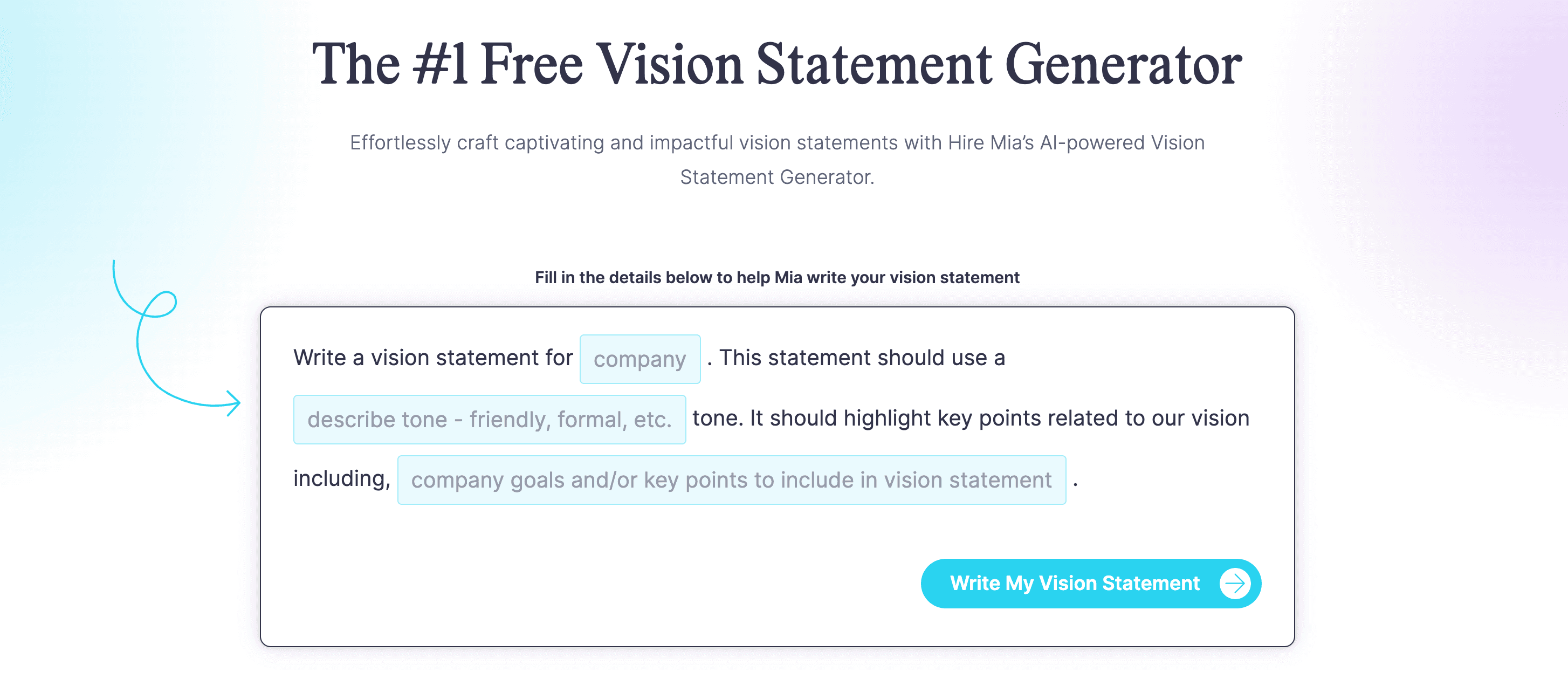Your vision statement tells consumers what your big-picture goals are for your brand. This is invaluable when 71% of consumers today actively buy from brands that share their values.
The best brands are able to concisely state what they do, what they hope to achieve, and why their brand will have a big impact on the world. This is where a vision statement comes into play. It highlights the aspirations you have for your brand and what you ultimately want to achieve.
Vision Statement Definition
A vision statement outlines what you want the future of your business to look like. It’s often idealistic and aims to inspire potential customers and employees. In many cases, a vision statement will highlight how a brand will have an impact on the world and how customers will feel when they make a purchase.
Because the vision statement describes a brand’s purpose, it’s a great way to articulate any desired characteristics and values while also ensuring everyone involved can see the bigger picture. It’s a crucial part of the branding process.
Recommended: Vision Statement Generator
The Difference Between A Vision Statement & Mission Statement
Mission Statement
A mission statement is more concrete and practical. It highlights a business’s objectives and the steps it’ll take to get there – it provides the foundations from which your marketing strategy and operations can grow. It is a roadmap that guides decision-making, helping ensure all efforts are aligned with the company’s core values and purpose. By articulating what the company stands for and what it delivers to its customers, the mission statement becomes an essential tool for focusing day-to-day operations.
Vision Statement
A vision statement is inspirational. It outlines where a brand would like to be in the future and what it hopes to achieve. It’s often forward-thinking and can provide a sense of direction and purpose for both employees and customers. By setting a clear vision, the organization aligns its long-term aspirations with its actions and growth strategies, motivating its team and creating a shared goal.
At CoSchedule, our vision is that we want CoSchedule products and training to be a key part of every marketer’s toolkit.
Recommended Reading: 38 Marketing Plan Examples, Samples, and Templates to Outline Your Own Plan
How To Craft A Vision Statement
Creating a vision statement will help you put into words what you hope your business will grow into and your big-picture dreams. It reflects the values, purpose, and impact that you want to have on the world. Here are some questions to consider when writing your vision statement:

Create a vision that drives your brand forward with the Brand Vision Statement Generator!
What Are Some Of Our Core Values?
Consider what your main values are as a brand. Are you all about sustainability? Do you put a big emphasis on community? Think about what makes your brand unique and, more importantly, why that makes you unique. Core values shape your decisions and actions, guiding your team and creating a unified direction for your business. Whether you value innovation, inclusivity, or integrity, these principles define your brand’s character and influence customer perceptions.
How Do We Describe Our Company Culture?
Explore what it’s like to work at your company. Speak to team members to get their insider opinions and identify what your company culture looks like now or what you want it to look like in the future. Consider the work environment, team dynamics, and overall atmosphere in your office or remote spaces. A strong company culture encourages employee satisfaction, collaboration, and productivity, fostering an environment where everyone feels motivated and valued.
Where Do We See Our Company In 5-10 Years?
The age-old question. Dig deep into what you hope to achieve with your brand over the next decade. Are there any big milestones you’d like to reach? Do you have big dreams about becoming the best-known brand in your industry? Setting long-term goals helps you remain focused and provides a benchmark to track progress. Whether it’s market expansion, new product launches, or industry recognition, this vision shapes your company’s trajectory and motivates your team to work toward shared aspirations.
What Kind Of Impact Do We Want To Have On Our Customers?
Your customers are your biggest asset. Think about what impact you want your business to have on them and how you want them to feel when they interact with your brand. How will you help them achieve their goals? What big pain points are you solving? The experience you provide customers can build loyalty, trust, and advocacy. By focusing on delivering real value and understanding their needs, you create a lasting relationship that strengthens both your brand and their success.
What Kind Of Impact Do We Want To Have On Our Industry?
Next, consider your positioning in your industry. Are you doing things differently from other brands? How will your brand impact the industry, and what are you hoping to change? By defining your role and influence within your sector, you can establish yourself as a thought leader or disruptor, driving change and innovation. Your efforts could challenge outdated practices, introduce new technologies, or set higher standards, reshaping the landscape for future generations in your field.
How Do We Go Above & Beyond Our Competitors?
Determine how you stand out above your competitors. What are you doing differently than them, and how do you want to separate yourselves from them in the future? One easy way to think about this is to identify why customers choose your brand over another. It could be exceptional customer service, unique product features, or a more personalized experience. By consistently delivering on these differentiators, you not only attract customers but also build loyalty, turning them into brand advocates who prefer you over competitors. Additionally, focus on continuous innovation and improving your offerings to ensure that you maintain your competitive edge and stay ahead in your industry.
Now you know what a vision statement is, why it’s important, and how you can create your own. Let’s take a look at some real-life inspiration. We’ve pulled together 15 vision statement examples from big-name brands so you can see it all in action.
1. IKEA
Vision statement: To create a better everyday life for the many people
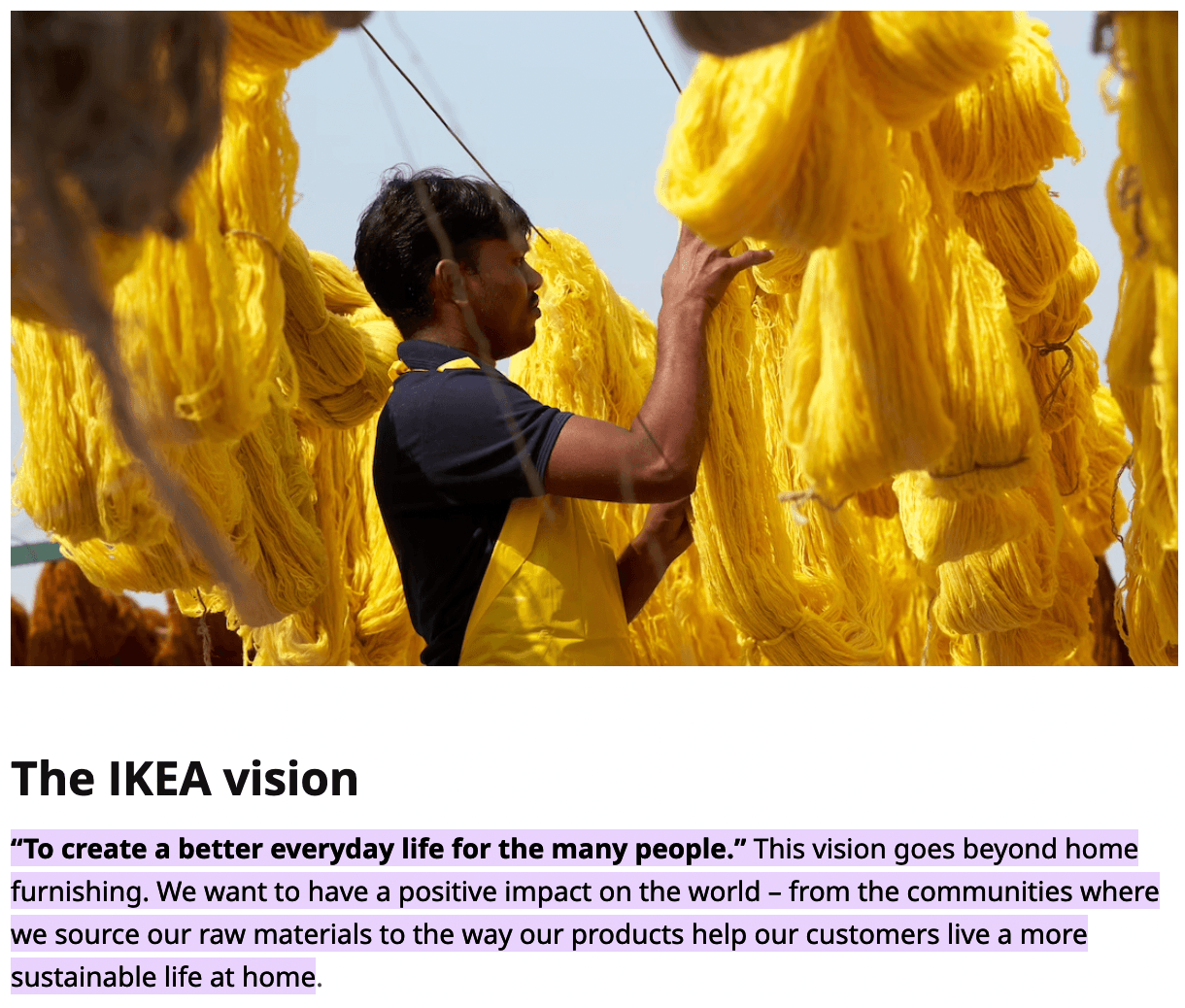
IKEA’s vision statement doesn’t mention its furniture products at all. Instead, it highlights the intangible things it wants to give its customers and how it will have a bigger impact on the world than simply selling flat-pack furniture.
2. Spotify
Vision Statement: We envision a cultural platform where professional creators can break free of their medium’s constraints and where everyone can enjoy an immersive artistic experience that enables us to empathize with each other and to feel part of a greater whole.
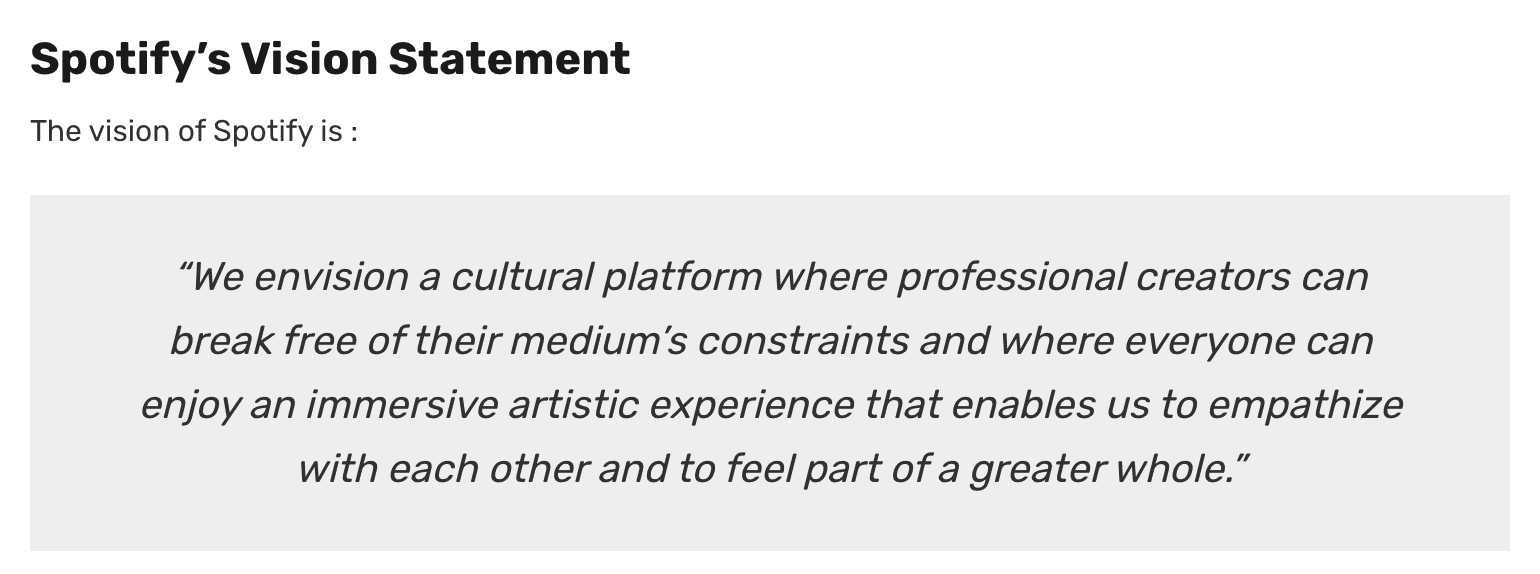
Spotify’s vision statement is very specific and detailed. It talks about who it wants to help and what it wants to help them to do.
3. Charity Water
Vision Statement: Together, we can end the water crisis.
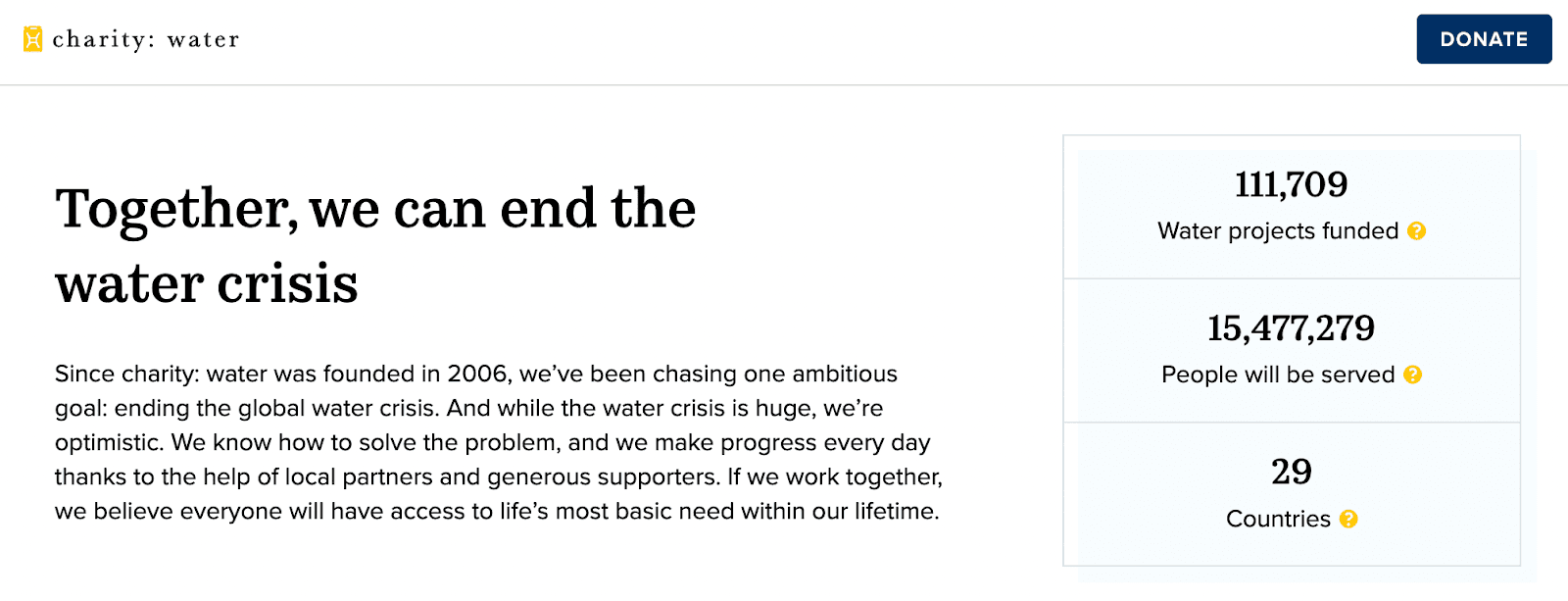
Charity Water is a charity, which means its vision statement is about changing the world in a big way. Its lofty dreams target a very sensitive topic that’s affecting many people around the world.
4. Tesla
Vision Statement: To create the most compelling car company of the 21st century by driving the world’s transition to electric vehicles.
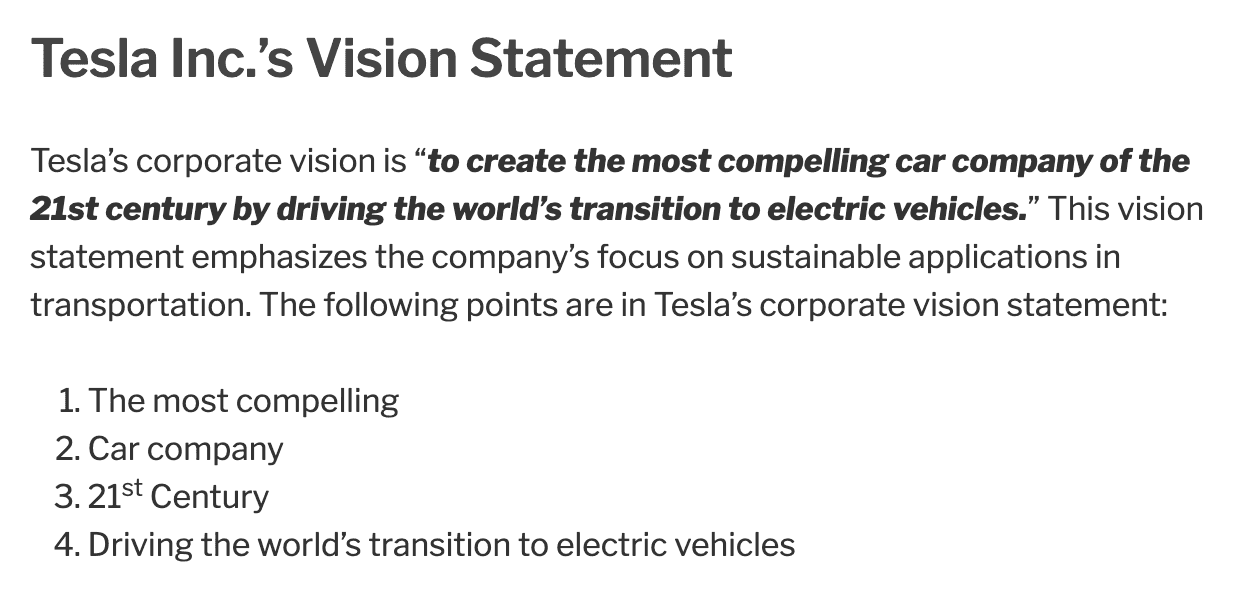
It’s no surprise that Tesla has a big vision. It has a very specific aim of driving the change to electric vehicles.
5. Adobe
Vision Statement: Change the world through digital experiences.
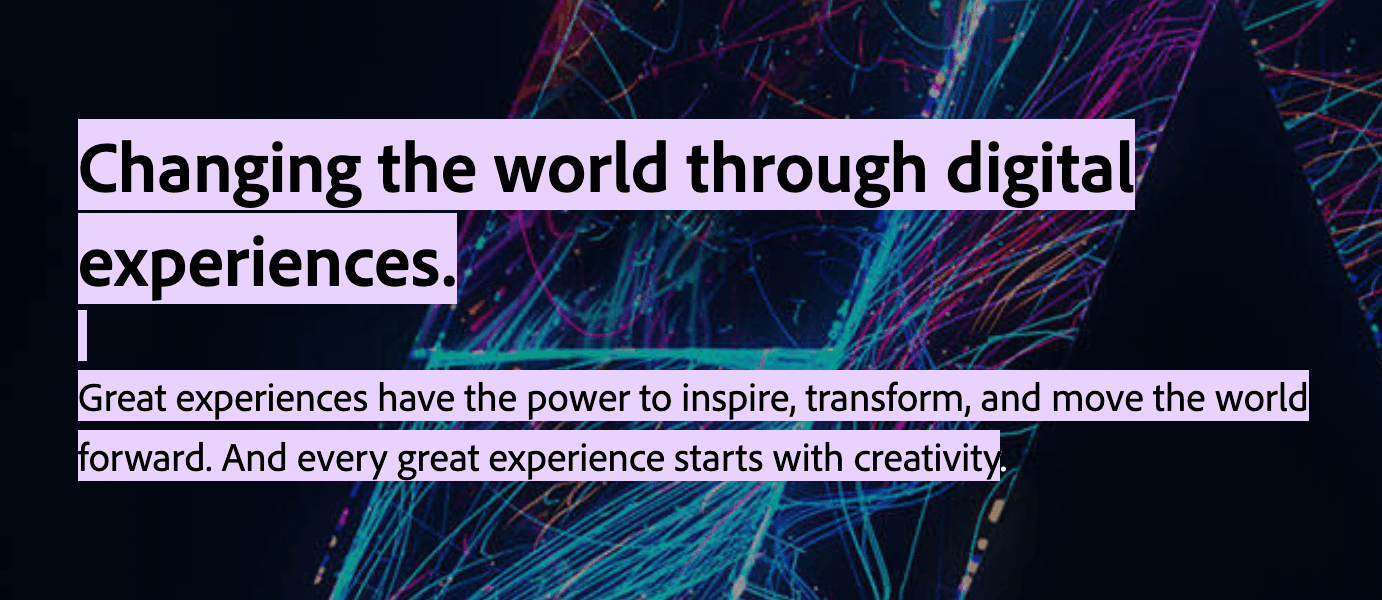
Adobe’s vision statement boldly states it wants to change the world with what it does. The vision is a big one, but a household name like Adobe has the potential to be world-changing.
6. Delta
Vision Statement: Connect the world. Reflect the world. Respect the world.
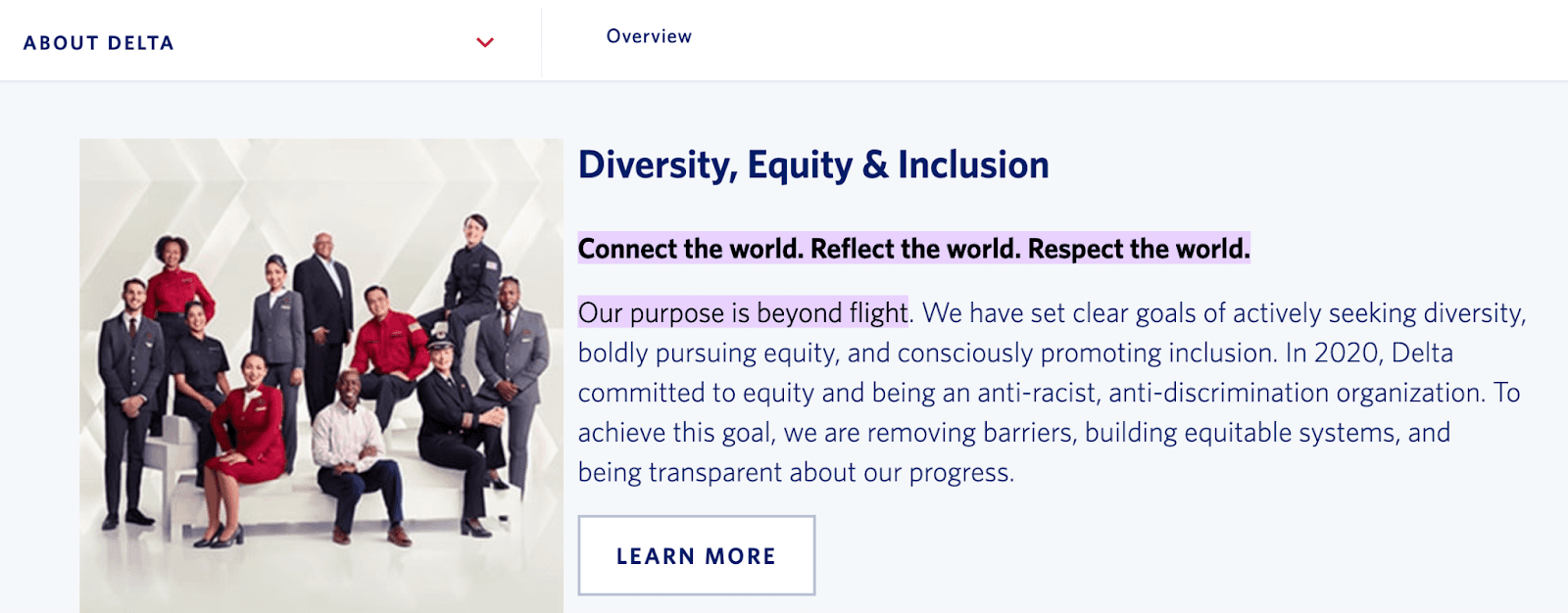
Delta’s vision nods to its travel-based products while highlighting how it hopes to impact the world with its offerings.
7. Intel
Vision Statement: We create world-changing technology that improves the life of every person on the planet.

Intel’s vision statement actually highlights what the brand does now rather than what it hopes to achieve in the future.
8. Microsoft
Vision Statement: Empower every person and every organization on the planet to achieve more.

Like many of the other vision statements here, Microsoft doesn’t mention its products at all and instead describes what it hopes to achieve for its customers.
9. Disney
Vision Statement: To be one of the world’s leading producers and providers of entertainment and information.

Disney pinpoints where it wants to be in its industry – at the top. The vision statement weaves in its products and what the brand does for its customers.
10. Chick-fil-A
Vision Statement: To have a positive influence on all who come in contact with Chick-fil-A.
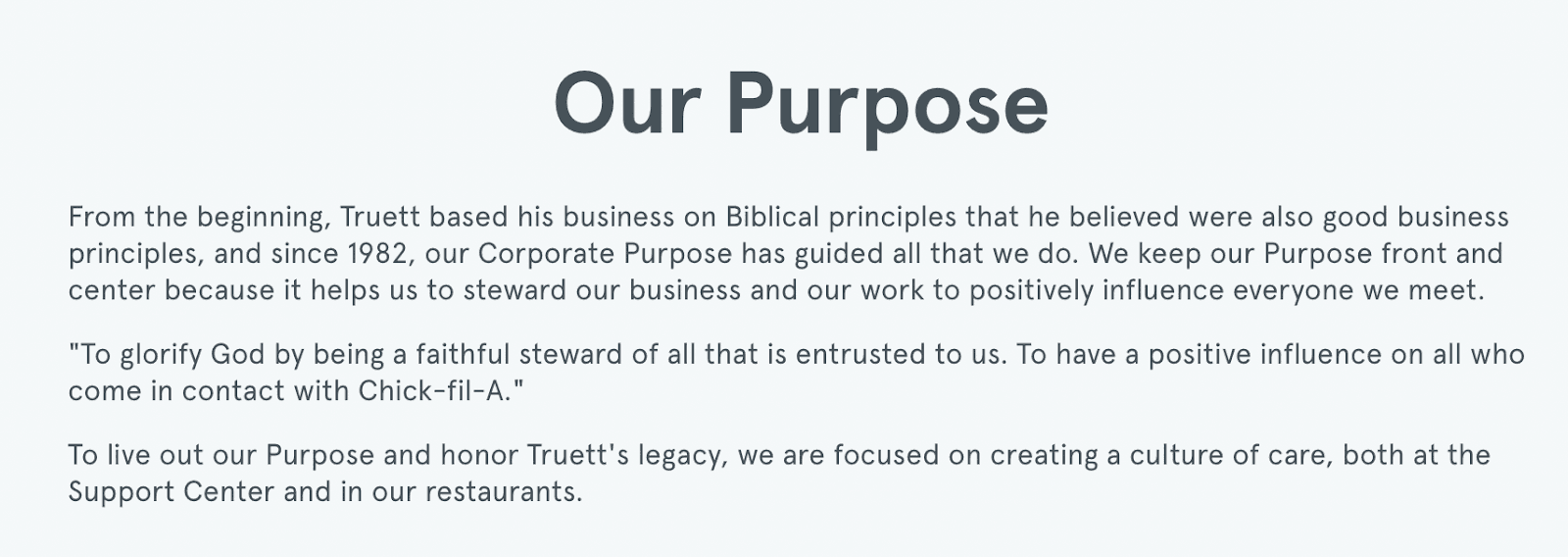
Chick-fil-A’s vision statement doesn’t mention chicken at all. Instead, the brand highlights how it wants to have an impact on its customers.
11. SAS
Vision Statement: To transform a world of data into a world of intelligence.

SAS’s vision statement shines a spotlight on the brand’s expertise and indicates what it’s going to do for the wider industry and the world in general.
12. LinkedIn
Vision Statement: To create economic opportunity for every member of the global workforce.
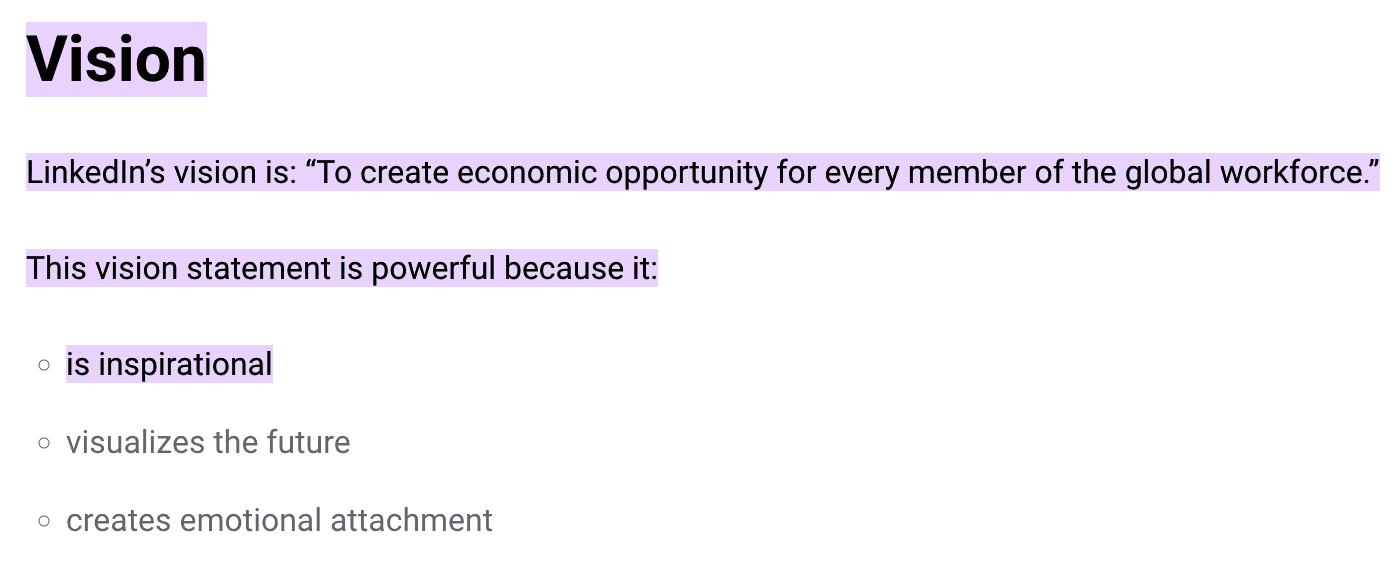
LinkedIn is very clear in its vision statement about who it wants to help and how it’s going to help them.
13. HERMES
Vision Statement: HERMES envisions a world where people have equitable access to preventive and curative services and sustainable means to achieve positive health status.

HERMES paints a picture of an ideal world with its vision statement. It goes into detail about what exactly it would like to achieve and who it’s going to help.
14. Coca-Cola
Vision Statement: Our vision is to craft the brands and choice of drinks that people love, to refresh them in body & spirit.

Of course, Coca-Cola wants to create the world’s favorite drinks, but the vision statement takes it one step further and highlights how it wants customers to feel when they buy its products.
15. Costco
Vision Statement: A place where efficient buying and operating practices give members access to unmatched savings.

Costco’s vision statement outlines what it hopes to achieve for its customers and how it’s going to do that for them.
What Is A Good Vision Statement?
A good vision statement outlines what an organization would ultimately like to achieve and gives purpose to the existence of the organization. It should be inspirational and idealistic, touching on how a brand wants to make an impact on the world.
What Are The 3 Parts Of A Vision Statement?
- Future goals
- The kind of impact you want to have
- How your company is different from others
How Do You Write A Proper Vision Statement?
To write a vision statement, answer the following questions:
- What are your core values?
- How do you describe your company culture?
- Where do you see your company in 5-10 years?
- What impact do you want to have on your customers?
- What impact do you want to have on your industry?
- How do you go above and beyond your competitors?
What Is The Average Length Of A Vision Statement?
The average vision statement is 18 words long, but you should aim for 2-3 sentences that clearly explain your goals for the future and the impact you’d like to have on your industry and the world.

